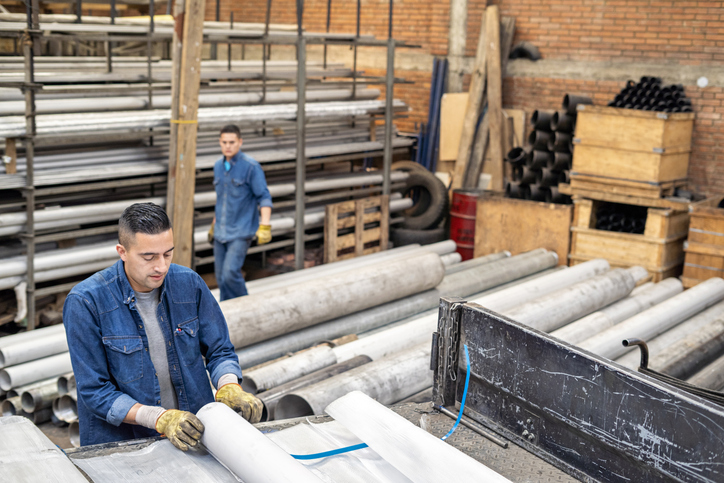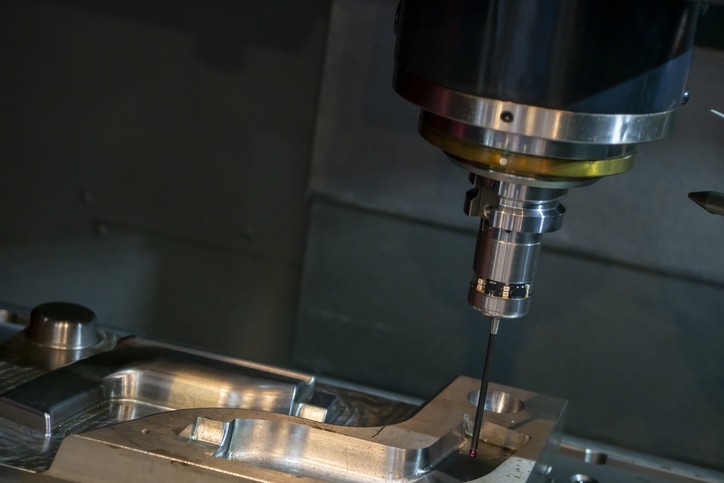CNC aluminum machining has been a crucial process in the manufacturing industry for decades and is particularly vital in the military and aerospace sectors. CNC machining is a computer-controlled process allowing precise and accurate cutting, shaping, and forming of aluminum materials. The resulting products have a high strength-to-weight ratio, durability, and corrosion resistance.
In this guide, we’ll explore the advancements in CNC machining, the advantages of using this technology in military and aerospace manufacturing, the challenges and limitations of the process, and the future trends of aluminum machining.
Overview of CNC Aluminum Machining
Computer Numerical Control (CNC) machining is a process that involves using computer software to control the movement of machines that cut, shape, and form materials. In the case of aluminum machining, the process involves using CNC machines to precisely cut and shape aluminum materials into desired shapes and sizes.
Aluminum is a very popular material in CNC machining due to its low density, high strength-to-weight ratio, and excellent machinability.
Aluminum alloys, in particular, are used in CNC machining due to their unique properties. They are known for their excellent strength, durability, and resistance to corrosion. Additionally, they can be machined easily and precisely, making them ideal for use in manufacturing industries such as aerospace, military, automotive, and medical.
The advantages of using aluminum in CNC machining include its lightweight, high strength, and resistance to corrosion, which make it an ideal material for products that need to be durable, strong, and long-lasting. Also, aluminum is affordable, making it cost-effective for many industries.
Some of the most commonly used aluminum alloys in CNC machining include 6061-T6, 7075-T6, and 2024-T3. These alloys are known for their excellent strength, durability, and machinability. In the next section, we will discuss the advancements in aluminum machining that have made it a crucial process in the manufacturing industry.
Advancements in CNC Aluminum Machining
Over the years, CNC machining has evolved and improved significantly. These advancements have made machining more efficient, precise, and cost-effective, making it a crucial process in the manufacturing industry. Some of the most significant advancements in this field include:
Computer-Aided Design (CAD) Software
CAD software has made designing and creating complex parts and components easier. The software allows for 3D modeling, making it easier to visualize the final product before production begins. Additionally, the software allows for simulations to test the functionality and performance of the product before it is manufactured.
High-speed Cutting Technology
High-speed cutting technology has made it possible to machine parts at faster speeds and with greater precision. This technology involves using high-speed spindles and cutting tools to remove material quickly and accurately.
Multi-axis CNC Machines
Multi-axis CNC machines can move in multiple directions, allowing for more complex and intricate parts to be machined. These machines can move in three, four, or five axes and can create parts with curves, angles, and contours that would be impossible to achieve with traditional machining methods.
Automation and Robotics
Automation and robotics have made it possible to improve the efficiency of the manufacturing process. Robots can perform repetitive tasks, such as loading and unloading parts, and can work continuously without fatigue, reducing the need for human labor.
Advancements in Cutting Tools
Advancements in cutting tools, such as the development of carbide and diamond-coated tools, have made it possible to machine aluminum materials more efficiently and accurately. These tools can cut through the material faster, produce finer finishes, and reduce the wear and tear on the machine.
Nanotechnology in CNC Machining
Nanotechnology has made it possible to manufacture products with even greater precision and accuracy. Nanoparticles can be added to the aluminum material to improve its properties and make it even more resistant to wear, tear, and corrosion.
Advantages of Using CNC Aluminum Machining in Military and Aerospace Manufacturing
CNC aluminum machining offers numerous advantages for military and aerospace manufacturing. These advantages make CNC machining ideal for military and aerospace manufacturing. Some of these advantages include the following:
Precision and Accuracy
CNC machines are known for their precision and accuracy, making them ideal for creating parts and components with tight tolerances. This is especially important in the military and aerospace industries, where precision and accuracy are crucial for safety and performance.
Increased Efficiency and Productivity
CNC machines can produce parts quickly and accurately, reducing the time it takes to manufacture products. This leads to increased efficiency and productivity, which is crucial in the military and aerospace industries, where deadlines are often tight.
Cost-effectiveness
CNC machines are cost-effective for the military and aerospace industries due to their ability to produce parts quickly and accurately. This reduces the need for manual labor and reduces the likelihood of errors, reducing the overall cost of production.
High Strength-to-weight Ratio
Aluminum materials used in CNC machining have a high strength-to-weight ratio, making them ideal for military and aerospace products that need to be strong and lightweight.
Durability and Resistance to Corrosion
Aluminum materials used in CNC machining are known for their durability and resistance to corrosion. This is particularly important in the military and aerospace industries, where products must be long-lasting and withstand harsh environments.
Future Trends in CNC Aluminum Machining
CNC aluminum machining is an ever-evolving process, and future advancements will likely improve its efficiency and precision. These trends will also likely shape the future of machining and manufacturing. Some of the future trends in CNC aluminum machining include:
Advanced Materials and Composites
Advancements in materials science will likely lead to the development of new and advanced materials and composites that are even stronger, lighter, and more durable than aluminum. CNC aluminum machining will need to adapt to these new materials to remain competitive in the manufacturing industry.
Additive Manufacturing and 3D Printing
Additive manufacturing and 3D printing are likely to become more prevalent in the manufacturing industry, allowing for the creation of complex parts and components that would be difficult or impossible to produce with traditional CNC machining.
Internet of Things (IoT) Integration
Integrating IoT technology will likely improve the efficiency and productivity of CNC machining. IoT sensors can collect data on machine performance, material usage, and energy consumption, allowing for better optimization and predictive maintenance.
Virtual and Augmented Reality
Virtual and augmented reality technologies are likely to become more prevalent in the manufacturing industry, allowing for better visualization and simulation of parts and components before they are manufactured. This reduces errors and improves the efficiency of the manufacturing process.
Staying Ahead in the CNC Aluminum Machining Industry
Machining is a crucial process in the manufacturing industry, particularly in the military and aerospace sectors. The process has evolved significantly over the years, with technological advancements leading to increased precision, efficiency, and cost-effectiveness.
CNC machining offers so many advantages for military and aerospace manufacturing, including precision, efficiency, cost-effectiveness, high strength-to-weight ratio, and durability.
At NAMF, we are committed to staying up-to-date with advancements in CNC machining to provide our customers with the highest quality products and services. We encourage our readers to explore CNC aluminum machining with us to see how it can benefit their business.



